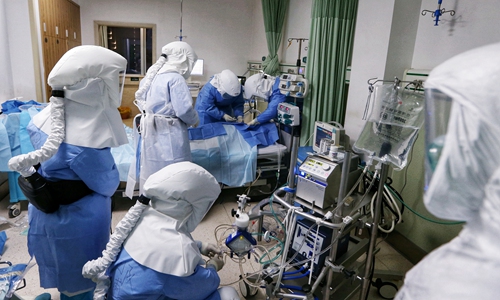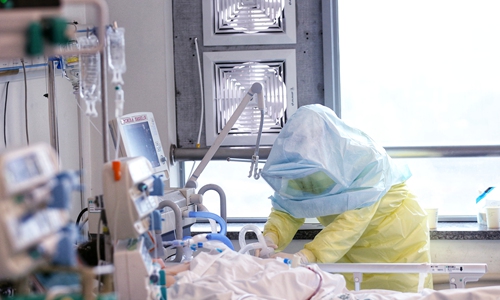
Recently, 38,000 medical personnel dispatched from other provinces to support Wuhan left the city, according to the National Health Commission (NHC).
Some of China's best doctors in respiratory and infectious diseases are still in Wuhan tasked with treating COVID-19 patients in critical condition, trying their best to save more lives as the nation is close to the final stages to cure or discharge the remaining patients.
There remain nearly 1,000 medics and experts from across the nation who have continued to treat critically ill patients in Hubei Province, the NHC said. Although the majority of China's COVID-19 patients have been discharged from hospital, 1,160 are still in treatment, while 176 patients were in critical in the first week of April.
As the outbreak is being brought under control and therefore, there is a sharp decline in the number of patients.
Fortunately, Wuhan has sufficient healthcare personnel and medical resources to deal with the remaining patients.
Today’s Story in the Story looks at a few of China’s medical workers who have stayed behind in Wuhan to treat critically ill COVID-19 patients.

Doctors from East China's Jiangsu Province deployed to Wuhan use ECMO to treat a COVID-19 patient in critical condition at Wuhan First Hospital. (Photo: GT)
Zheng Ruiqiang, director of the ICU at Northern Jiangsu People's Hospital arrived in Wuhan in January when the city was locked down. Zheng was part of the first group of senior medics who came to lend their expertise in the fight against the novel coronavirus.
With expertise in the fields of organ function support, acute respiratory distress syndrome, severe infection therapy, and clinical nutrition, Zheng was tasked with treating patients in the ICU at Wuhan Pulmonary Hospital, one of the first hospitals designated to handle patients with COVID-19.
"There are still eight patients in the ICU I'm working in. I'm mainly responsible for designing individual treatment plans for each patient," Zheng said.
He said that around 78 percent of seriously ill patients had been discharged from his wards since his arrival.
In the early stages of the pandemic, Zheng visited other designated COVID-19 hospitals to triage critically ill patients so they could receive more intensive care and targeted treatments.
"Lifting the lockdown in Wuhan won't cause a significant increase in the number of patients in severe condition, because our policy is to screen for the virus before people return to work, thereby putting the focus on prevention to relieve the pressure on frontline medics," he said.
"However, the patients we're still treating in the ICU are in critical condition, so the main challenge is to inhibit the complications of COVID-19. About 20 percent of patients admitted to the ICU are being treated with Extra Corporeal Membrane Oxygenation (ECMO)," Zheng said. ECMO is the treatment of last resort.

Doctors give treatment to a COVID-19 patient in critical condition in Wuhan, Hubei Province. (Photo: GT)
For frontline medical workers, treating patients with ECMO and tracheal intubation puts them at high risk of infection due to close contact with the patients' airway secretions, which carry the virus.
The novel coronavirus can spread through aerosol transmission if a person is exposed to an enclosed environment with a high concentration of aerosol for a long time, according to the NHC.
"In the case of more dangerous situations, to protect younger staff, we've tried to operate by ourselves," Zheng, a medical veteran who also fought against the SARS outbreak in 2003, was quoted as saying by media.
In the ICU, Zheng likes to ease the nerves of younger medical staff by telling light-hearted stories. "Our job in the ICU is to save lives and race against death," Zheng said.
"It is more than important to maintain optimism and hope in such a depressing work environment," he said.
Doctor Cao Zhaolong, 56, came to aid Wuhan from Beijing in February, along with more than 130 colleagues.
He was responsible for treating critical patients at an intensive care ward with 50 beds at the Sino French New City Branch of Wuhan Tongji Hospital.
Facing life and death in the ICUs, COVID-19 patients' will to live has always touched Cao, and this spiritual power is essential for recovery, he said.
"Many couples or mothers and sons are in our ward, asking me about their family's situation. I would tell them how well their families were recovering and encouraged them to have the confidence to fight the disease," Cao said.
(Produced by Nancy Yan Xu, Lance Crayon, Brian Lowe and Da Hang. Music by bensound.com. Text from Global Times.)


